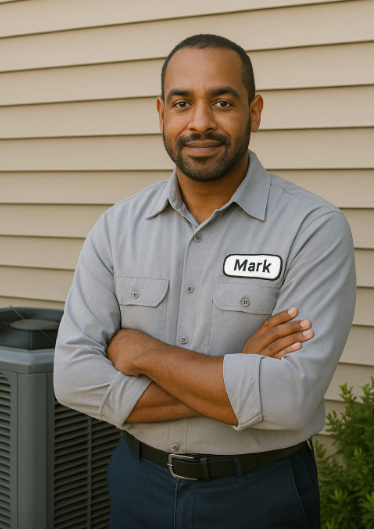If you're shopping HVAC in 2025, you're likely encountering terms like “Infinity air conditioner” or “Infinity AC system”—Carrier’s top-of-the-line offering packed with smart control, whisper-quiet operation, and high efficiency. But as an experienced contractor (Mark Callahan here, with over 25 years in HVAC), I'm a regular witness to systems that wow on paper but underperform in the real world. Today, we’ll walk through what makes Infinity special—and why in many cases, modern alternatives deliver nearly the same comfort without the inflated price tag.
What the Infinity System Promises
Carrier’s Infinity tier includes the likes of the Infinity™ 19VS and Infinity™ 26 systems with variable‑speed Greenspeed® compressors. These units modulate from about 40–100% output and are orchestrated by a fully communicating thermostat. According to HVAC.com, homeowners consistently praise these systems for “exceptionally smooth temperature control, dehumidification, and whisper‑quiet performance” (PickHVAC review).
Key luxury features:
-
Precision comfort via multi‑stage compressor and blower speed
-
Smart thermostat integration with remote access and updates
-
Ultra‑quiet operation, some models as low as ~51 dB
-
Top-tier efficiency: up to 24 SEER2 in some Infinity 26 models
Of course, a lot of that comfort depends heavily on installation quality—proper sizing, duct sealing, and a clean refrigerant charge are essential for performance.
How Much Will an Infinity AC Really Cost?
Let’s talk dollars. For a typical 2–3 ton residential setup:
-
Unit price: $4,000–$7,500
-
Installed cost (system, labor, permits, accessories): $7,000–$13,500
That's based on real-world quotes from multiple HVAC dealers across the country (Modernize equipment guides). High-end models like Infinity 26 push the upper limits—and they often require specialized installers certified by Carrier to maintain warranties.
When the Infinity System Makes Sense
So why pay top dollar?
-
You want whole-home zoning with whisper-quiet comfort
-
You care about top-tier efficiency and rebates
-
You want future-proof control with communication across thermostats
-
You're planning to live in the home for 10+ years and minimize monthly energy bills
Consumer Reports estimates that systems tightly integrated with smart thermostats—like Infinity—can reduce energy use by 10–20% annually, especially with multi-zone operation (Consumer Reports smart thermostat summary).
Building a Smarter Budget Alternative
Not every homeowner benefits from these high-end features. A number of factors make alternatives highly appealing:
-
Smaller homes often don't require variable-speed modulation
-
Upfront budget constraints mean that paying $10K may not be feasible
-
Simpler designs can still deliver solid comfort when installed correctly
Take the Goodman 3 Ton 14.5 SEER2 R‑32 bundle. It’s not a Carrier Infinity—but its real-world EER matches or exceeds many higher-tier units, thanks to R‑32 refrigerant (low GWP) and proper SEER2 compliance.
Despite lacking remote diagnostics or variable-speed dampers, when paired with a programmable thermostat and good duct sealing, it hits the comfort standard—and costs about 30–40% less installed versus comparable Infinity systems.
Performance Comparisons in Real Homes
In homes up to ~2,500 sq ft with modern insulation and duct layout:
-
Infinity systems run longer at low speed—excellent for humidity control
-
But R‑32 systems like Goodman’s run nearly as quietly if properly installed
-
Goodman has fewer proprietary parts, making service easier and cost-effective
-
Infinity offers more advanced zoning—but only if your home is pre-wired for it
I've seen many 3–4 ton Infinity systems installed in homes that never tapped even 70% compressor capacity. A simpler 2.5–3 ton R‑32 system often performs the same with fewer “bells and whistles.”
What Installation Really Matters
Even a premium Infinity system underperforms with poor installation:
-
Undersized or leaky ducts reduce airflow and efficiency
-
Oversized cooling output causes short cycling and humidity issues
-
Incorrect refrigerant charge voids warranty and undermines efficiency
-
Poor insulation or ductwork offsets any built-in smart thermostat gains
That’s where professional load calculation (Manual J), load matching (Manual S), and proper airflow (Manual D) become critical. Without those, even the best equipment falls flat.
Side-by-Side: Infinity vs. Goodman R-32
| Feature | Carrier Infinity System | Goodman R‑32 SEER2 14.5 Bundle |
|---|---|---|
| Efficiency | 18–24 SEER2 | 14.5 SEER2 (meets new standard) |
| Refrigerant | R‑410A (often) | R‑32 (low GWP, future-ready) |
| Compressor Tech | Greenspeed® variable-speed only | Multi-speed scroll (~70–100%) |
| Smart Controls | Full communications support | Compatible with third-party smart thermostats |
| Installed Cost (3-ton) | $8,000–$13,500+ | $5,000–$8,000 |
| Warranty | 10-year parts (installed by certified tech) | 10-year parts with fewer restrictions |
Carrier Infinity does direct integration between thermostat and system; Goodman relies on industry-standard thermostat compatibility—which is cheaper and still smart—but doesn’t support predictive diagnostics or remote firmware updates.
How to Decide Which Side You’re On
Do purchase Infinity if:
-
You need whisper-quiet all-zone control
-
You want automated comfort and humidity control built-in
-
Rebates make high-SEER systems financially attractive
-
You’ll stay in the home long enough to offset cost difference
Consider Goodman R‑32 or similar if:
-
You’re focused on real cost savings, not hype
-
You already have a good programmable thermostat or smart zoning system
-
You want trusted comfort without brand-name premium
-
Installation quality matters more than flashy marketing
Final Recommendations from Mark Callahan
At the end of the day, choosing between an Infinity AC system and a high-performing budget alternative comes down to your needs and expectations:
-
Infinity systems offer the ultimate in automation, whisper-quiet performance, and energy optimization—but they also demand premiums in price and installation expertise.
-
Systems like the Goodman 3 Ton 14.5 SEER2 R‑32 bundle deliver real-world SEER2, low-GWP refrigerant, and strong warranty—all at a lower price.
Make your choice wisely: evaluate square footage, usage patterns, zoning options, and long-term energy costs—not just sticker shock. The best HVAC system is the one that matches your needs—not just the one with the fanciest name.
Stay cool and smart,
Mark Callahan







